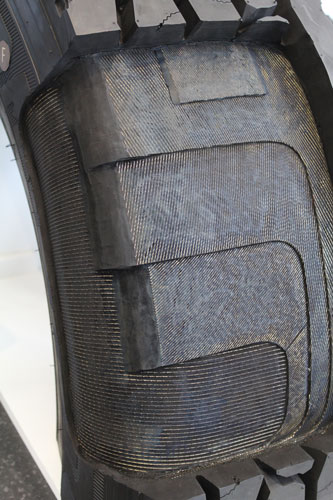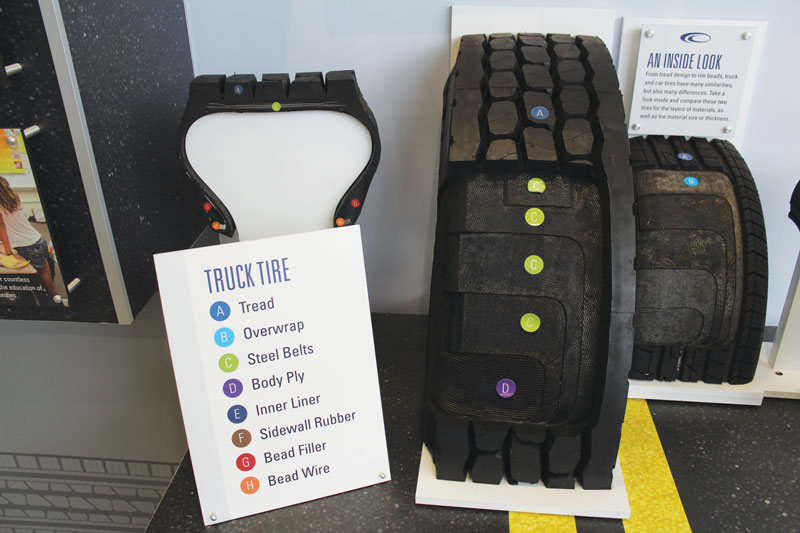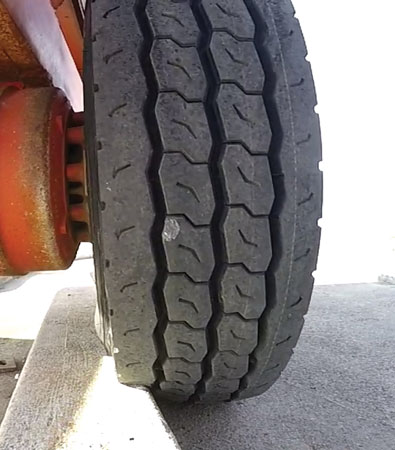If the tread is the face of the tire, then the casing is the heart that makes the tire live.
By Phillip Mosier

Tread pattern and the cost of the tire get a lot of attention from fleet managers, but it is the casing that is often the unsung hero in a commercial tire. It is the foundation of the tire and what allows you to receive multiple retreads. It is the true driver in lowering your overall cost of ownership. I always advise fleets to look at the tire, then look even closer at the foundation of the tire—this is the importance of the casing.
Providing a Low Cost of Ownership
Retreading tires is an integral way for waste haulers to reduce overall tire costs. We want our customers to be more profitable on the road, which is why we spend as much time as we do designing our casings. The primary objective is to produce tires that will provide a low cost of ownership, and we believe the casing’s quality plays a large role in helping to achieve that.
With advancements in technology, casing designs and compounding formulas over the years, tires have never been more ‘retreadable’ than they are today. Roughly half the commercial tires on the road are retreads according to the U.S. International Trade Commission.
One of the best gauges in determining casing quality is the warranty attached to the tire. Twenty years ago, the typical warranty for a commercial tire was about four years, with one retread. Now, it is up to seven years and multiple retreads. The warranty is based on data analysis and the confidence the tire manufacturer has in the casing and the retreadability of the tire.
Integrity of the Tires
Structural integrity of the tire’s casing should always be a priority when designing a new tire to bring to market. Roughly 75 percent of what you pay for in a tire is in the casing. For example, a little wider tire, and thus casing, in drive and steer positions does a couple of things. It gives better traction and more miles to removal since there is a bigger footprint, and it gives a wider width in the casing after it is buffed for retreading. This allows the casing to hold up better for multiple retreads while supporting premium retread widths that deliver enhanced on-road performance.
The core areas of the casing are the innerliner, sidewall, bead area and belt package. The quality of the innerliner, for example, can vary across the board. The best innerliners help lower permeability—or the slow diffusion of air out of the tire. We are also seeing the use of lightweight steel now in the belt package, which provides further protection to the casing from punctures.
Most of the top tier tires feature three or four-steel belt designs. Four belts help the integrity of the tires’ casing. That fourth belt gives an added layer of confidence and protection—especially against punctures from debris in landfills. Rust is a tire’s enemy and the extra steel belt helps protect the belts below.
Selling the Casings
While the majority of waste haul fleets retread, others do not. They sell their casings. The beauty of having tires with quality casings is that even if you decide not to retread a tire, there is a market for your casing. Retreaders will pay you a pretty penny for your casing as long as it is in good condition. Even if you do not plan on selling your casings, it is a good idea to see what a retreader is willing to pay for it. That, right there, will tell you the quality of your casing.
Retreaders will not accept tires that cannot be safely retreaded. Tires are thoroughly inspected before they are retreaded to make sure the casing is in good condition. And, oftentimes, retreaders will think twice about accepting specific tire brands based on the reputation of their casings. At the end of the day, a retreader is accountable for the tire that they retread, so they are not going to retread a tire if they do not trust the casing.

Making Sure your Casing Lives the Longest Life Possible
In order to reap the cost-saving benefits running retreaded tires can provide, or selling the casing, managing a proper tire maintenance program is just as important. If your drivers are not going through their pre-trip inspections, evaluating the conditions of their tires and consistently checking tire pressure, or the maintenance shop is not up to par with rotations and alignments, then the tires’ casing will be more prone to damage. Additionally, if your drivers are especially tough on tires, and you pull tires at the latest 32nds possible, then early failure may occur. If a retreader sees damage to the casing, they will declare that tire ‘unretreadable’ and now you no longer hold value in that tire. Common reasons tires are rejected are due to damage caused by running underinflated tires or by overloading them. Driver-related behavior, such as curbing can also be a contributing factor. Plus, due to the nature of the waste hauling business, tires are especially susceptible to punctures, which can lead to rejection.
The #1 thing you can do to ensure your tires are in good retread condition is to make sure you maintain proper tire inflation levels. It is by far the most important thing you can do. Underinflation builds heat in the tire and can cause rubber to fatigue and stress quickly. Remember, not only can the tread and belts be negatively impacted by underinflation, but the rest of the casing can also show signs of stress when not properly inflated.

Which Casings are Best? Ask a Retreader
The best way to identify tires with the best casings is by simply asking your local retread shop. Retreaders are at ground zero. They know casing quality and they see first-hand which tires are often rejected for retreading and which boast a high-retread rate. Getting an unbiased industry expert’s opinion on which tires have the best success retreading is invaluable. They will know if the tires you are currently running have good casings or if there are better options out there.
After checking in with your retreader, check the length of warranty of the tires you are interested in and how many retreads the tire manufacturer will cover. It will give you additional perspective on how many retreads you can expect to receive from a tire.
Casings of the Future
As development for the next generation of waste haul tires begins, next generation sidewall compounds will be able to hold up to the most aggressive use and a robust bead area construction will handle waste haulers’ increasing loads.
As one of the easiest ways to reduce tire-related costs, it is worth it to evaluate the structural integrity of your tires’ casings and cross-check them with other comparable tires. By doing your own research and working with your local retread shop and tire dealer, you can identify tires that provide the performance you require combined with a reduction in overall cost for the life of the tire. | WA
Phillip Mosier is Manager of Commercial Tire Development for Cooper Tire & Rubber Company. (Findlay, OH) A 20-year tire professional, he is responsible for the design and development of commercial truck and bus tires for the North and South America regions. Phillip and his team have brought to market many successful commercial truck tires in the Cooper Commercial Series and Roadmaster brand tire lines. For more information visit CooperTruckTires.com.
